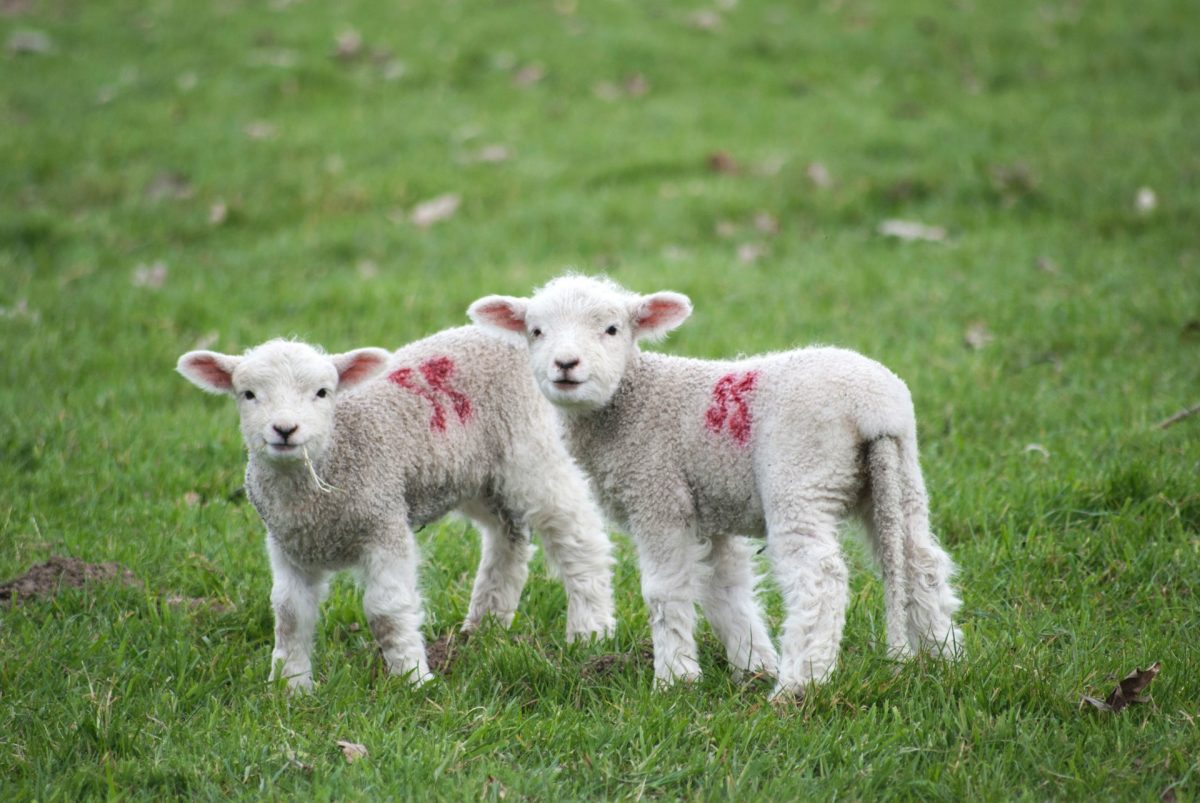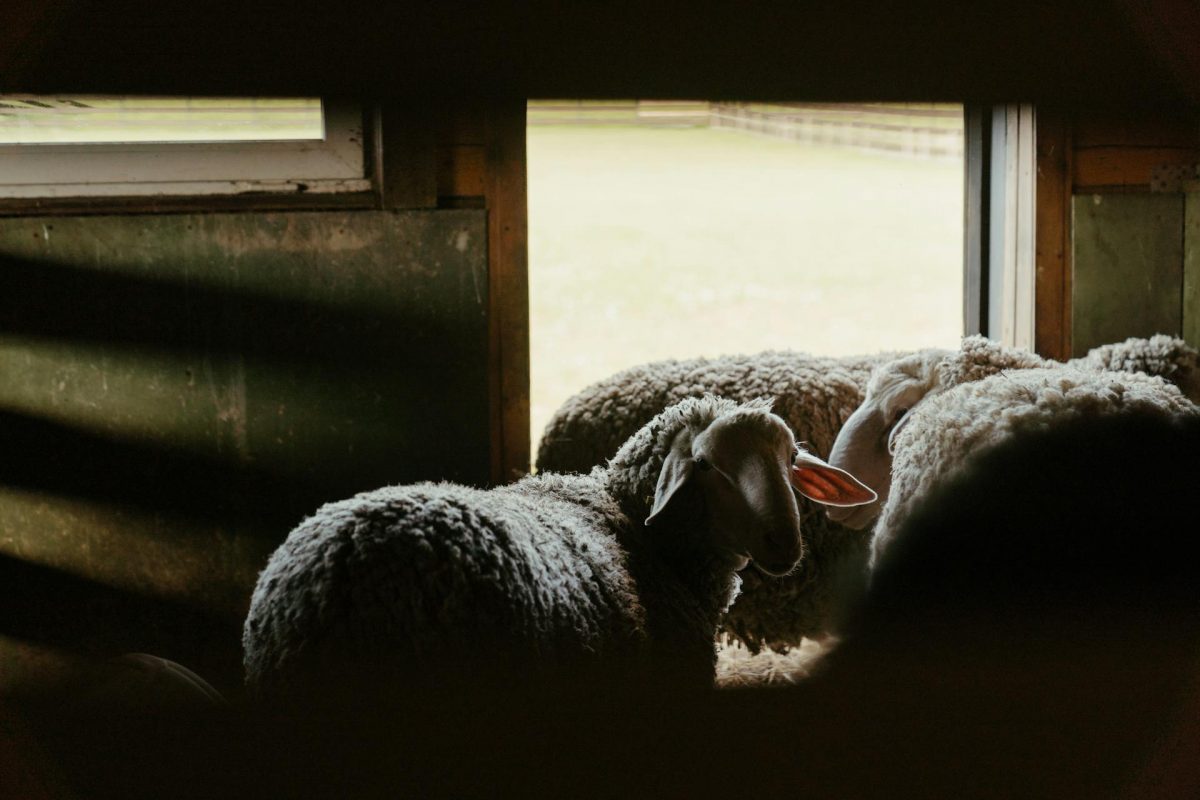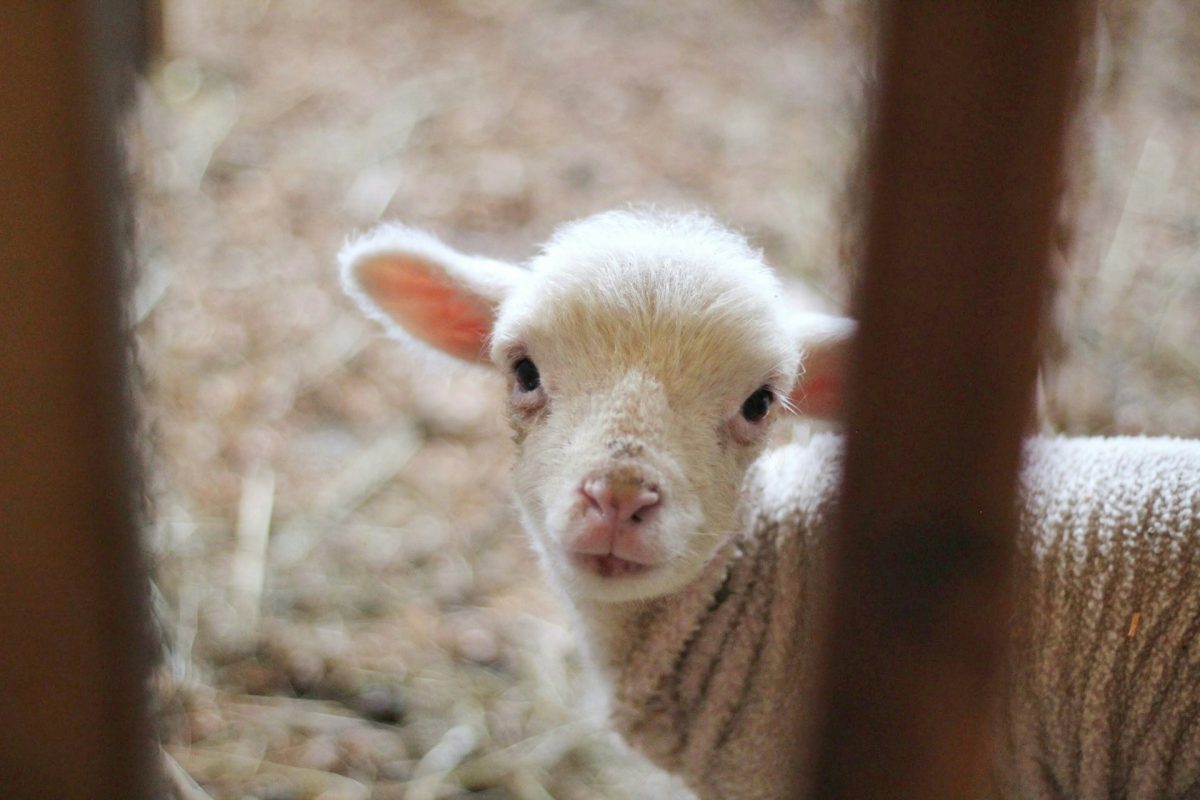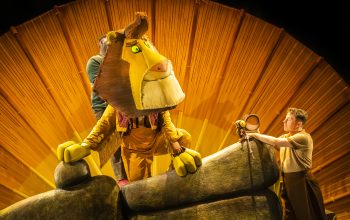We are at the peak of lambing season and many farms all over the country are opening their doors to the public to show off their new-born lambs.
Lambing events take place throughout March and April and can draw crowds of up to several thousand. For some, they are a popular way to celebrate the beginning of spring.
Ironically, the young sheep we like to hold and care for during this season will end up as juicy rib chops or slow-cooked lamb shoulder only a few months later.
While most of these lambs are too young to be part of this year’s Easter roast dinners, some British sheep are slaughtered as young as ten weeks old.
The majority of sheep slaughtered in the UK each year are lamb , meaning they are not yet a year old. On average, lambs are slaughtered at six months of age.
Considering that sheep can live up to an average of 12 years, this means that most sheep in the UK are killed at 5% of their natural life expectancy. In terms of age, this compares to a 4-year-old human child.

It seems macabre that during a time of the year that is associated with new life and new beginnings, we celebrate by cutting young lives short.
While the slaughtering of sheep for human consumption has seen a decline in recent years, our appetite for lamb during Easter and Eid al-Fitr celebrations is robust, according to the Agriculture and Horticulture Development Board (AHDB).
Already in January and February of this year, UK shoppers purchased more lamb than they did during the same time in 2023.
With Easter and Eid al-Fitr still coming up, the AHDB forecasts that a total of 2.8 million sheep will be slaughtered until the end of April 2024, including 2.4 million lambs.
But how do we reconcile the pleasure we take in cuddling these young animals with our appetite for their tender meat?
The same lambs we like to watch skip around green pastures in spring will get metal bolts fired into their baby brains only a few months later.
If things go well, the force of the penetrative captive bolt will render them unconscious, and the animals will start bleeding from their noses.
Or they might get stunned electrically so they do not feel any pain when they are shackled by one hind leg and hoisted up.
If things go well, the slaughter worker will sever all major arteries when they cut their little necks so they bleed out quickly.
But not all lambs will be so lucky.

Credit: Cottonbro Studio / Pexels
Sheep that are stunned electrically sometimes regain consciousness before their necks are cut, or, if stunning is carried out sloppily, do not lose consciousness at all. This means the animals may be paralysed but conscious at the time of slaughter.
Although most sheep in the UK must be pre-stunned to make the slaughter pain-free, there are some exceptions, for example in the production of Halal meat. According to data from the Department of Environment, Food and Rural Affairs (DEFRA), in 2022, 22.6% of sheep in the UK were legally slaughtered using non-stun methods.
As horrific as this sounds, at least the slaughter ends their suffering, because what comes before often is traumatic.
Already the transport from the farm to the abattoir can cause the sheep great distress. At large slaughterhouses, they are herded into a restrainer conveyor that carries them to their deaths.
Sheep are sensible and intelligent creatures. Because stunning and slaughtering happen near each other, the lambs in the stunning pen can smell the fear of those in the slaughterhouse. In some cases, they can also see the sheep around them getting stunned, which causes them trauma and stress.
In 2019, the charity Animal Equality UK (AEUK) published material filmed at a Welsh slaughterhouse (warning: graphic material) that showed lambs falling through the gap in the machine and getting trapped as a result of the conveyor failing to work.
The video shows the lambs hanging mid-air until they are stunned and slaughtered while still stuck in the machine.
Although legislation is in place to protect the welfare of farm animals, the Royal Society for the Prevention of Cruelty to Animals (RSPCA) says that “the law alone isn’t always strong or detailed enough to ensure that [farm animals] have a good quality of life.”

Some of the issues in lamb farming begin even earlier. According to DEFRA, 15% of lambs born annually are “lost” . With 16 million lambs born each year, this means around 2.4 million of them die before they are born, or shortly after.
Some of the reasons for their premature deaths are natural abortion, exposure, starvation and infectious disease which could be avoided through better planning and adequate facilities.
Although laws and animal welfare charities promote the “humane” treatment of farm animals, the reality is that sheep are a commodity that is counted in “head” or “deadweight”, and this is how they are often treated.
It is difficult to argue that slaughtering animals is in any way “humane” – cutting open the throat of a living creature is a horrific act that most of us would not want to witness much less execute.
Because of the way we consume food today, there is a disconnect between the animal we farm for consumption and the meat we buy, nicely cut and packaged, at the supermarket.
Maybe we do not want to meet the cow before we eat our burger because it reminds us that our food was once alive – a living, breathing, sentient being.
If that is the case, lambing season exposes our double standard and maybe that is a good thing.
If we can see the lambs that we hold and bottle-feed as deserving of protection, what might follow is an urge to, in fact, protect them.
Reporter for the Kingston Courier






